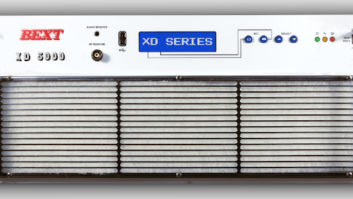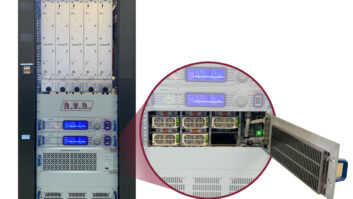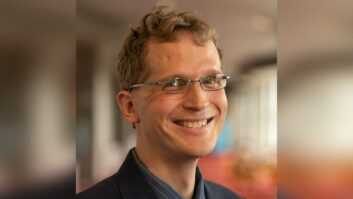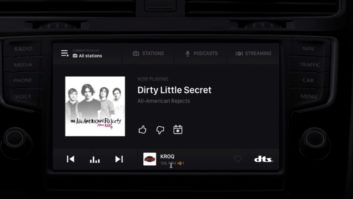Jeff Welton is Nautel’s regional sales manager for the Central U.S. This is one in a series of Q&As with professionals who wrote chapters in the new edition of the NAB Engineering Handbook. Here’s another from last week.
Radio magazine: You authored the chapter on FM transmitters. How has information about this topic changed since the previous edition of the handbook 10 years ago?
Jeff Welton: The biggest changes have been with the advent of LDMOS amplifiers and efficiencies which have finally broken the barrier that kept tube transmitters in the lead with respect to both cost of acquisition and cost of operation. In many cases now, solid state transmitters, while frequently still having a higher purchase price, will be much less expensive to operate, especially in the areas of electrical and cooling requirements. As well, with the advanced metering and IT connectivity that are a result of more cost effective DSP and computing technology, transmitters today can offer much more in the line of self-diagnostics, extra features and manufacturer support than could have even been imagined 10 years ago.
Radio:Can you share a specific tip or piece of information about FM transmitters, that you think readers might not know, as an example of the kind of useful information found in the handbook?
Welton: The biggest one — and one that I had not really thought of before, given that my experience has been based solely with Nautel and obviously limited to the systems that we have built or are building — is that it’s important to know the topography of the system you’re working with. Knowing how an amplifier is biased, or what the operating efficiency should be, is paramount to successful troubleshooting or maintenance scheduling and techniques. Due to the vast amount of topics covered in the handbook, we were limited in the amount of information we could present, so it’s a birds-eye view at times, but hopefully I have given at least a thumbnail of the different design techniques used over the years, up to the present day.
Radio:Did you come across any other interesting discoveries or unexpected findings as you did the research for your chapter?
Welton: I’ve been in this industry for almost 30 years, all of them with the same company and it was a real eye-opener to read some of the history and background to various designs over the years. It’s something that I had never really focused on before, as it was not really pertinent to my day job and may be something that a lot of other readers take for granted, having worked with these designs for years. However, it was really educational to read other descriptions of things I had thought I understood fairly well.
Radio:You work for a manufacturer, but the editors of the book no doubt seek to make sure that the content is vendor-agnostic. How do you make sure to include all relevant technologies and perspectives?
Welton: At the start, I was definitely worried this would be a challenge. For the tube portion, it was surprisingly easy — and I need to credit Geoff Mendenhall (retired from GatesAir) for his work in the 10th edition, as, with NAB’s permission, I used a lot of his work from that edition — this is one of the areas where I really learned a lot about a technology I will be the first to admit that I don’t know a lot about. For solid state technologies, I tried to stay generic — covering various amplifier and combiner technologies, without favoring any specific manufacturer. Since the tech doesn’t change much from one manufacturer to another (for example, a hybrid combiner will always have the same general schematic, regardless of specific implementation), it was not as hard as I thought it would be going in. It also helped that I was fortunate to be able to work with an amazing associate editor, the late Tom Osenkowsky, who, in spite of his personal battles, provided an incredible amount of guidance with the worldview he was trying to have presented by the authors. On a side note, I’m going to miss his dry wit in the various forums he frequented, it really shone through in our communications during the process of building this handbook.
Radio:What else should readers know?
Welton: There is a very wide range of topics presented in this handbook — it is an amazing wealth of information. With such a broad scope, we sometimes had to significantly condense the amount of information we were able to present. As a reference, the theory of operation section from one of our transmitter manuals is typically 30–50 pages long and we were trying to stay within a 15 page range, so it really is a birds-eye view at times, as previously mentioned. Education never stops, though, and hopefully this will make a good starting point for somebody needing a reference for just about any system or technology related to broadcast.












